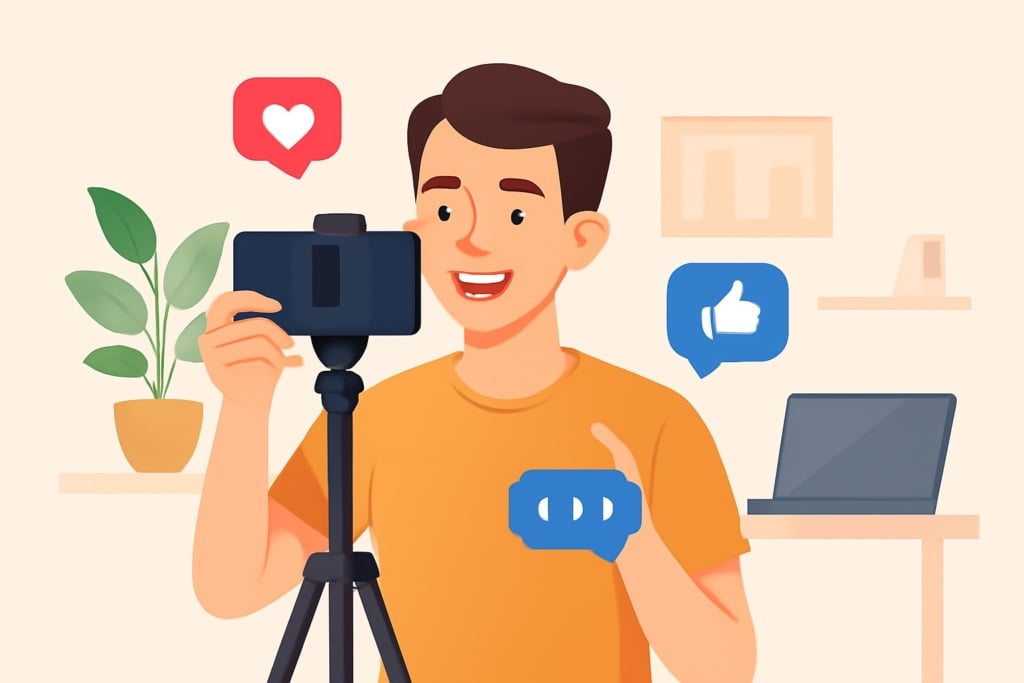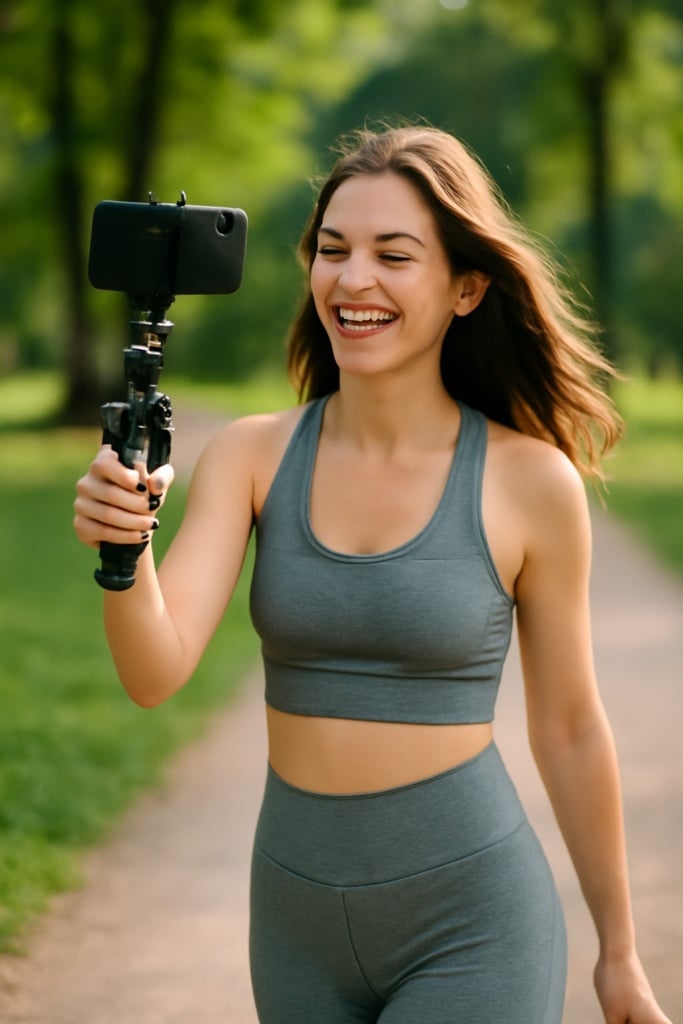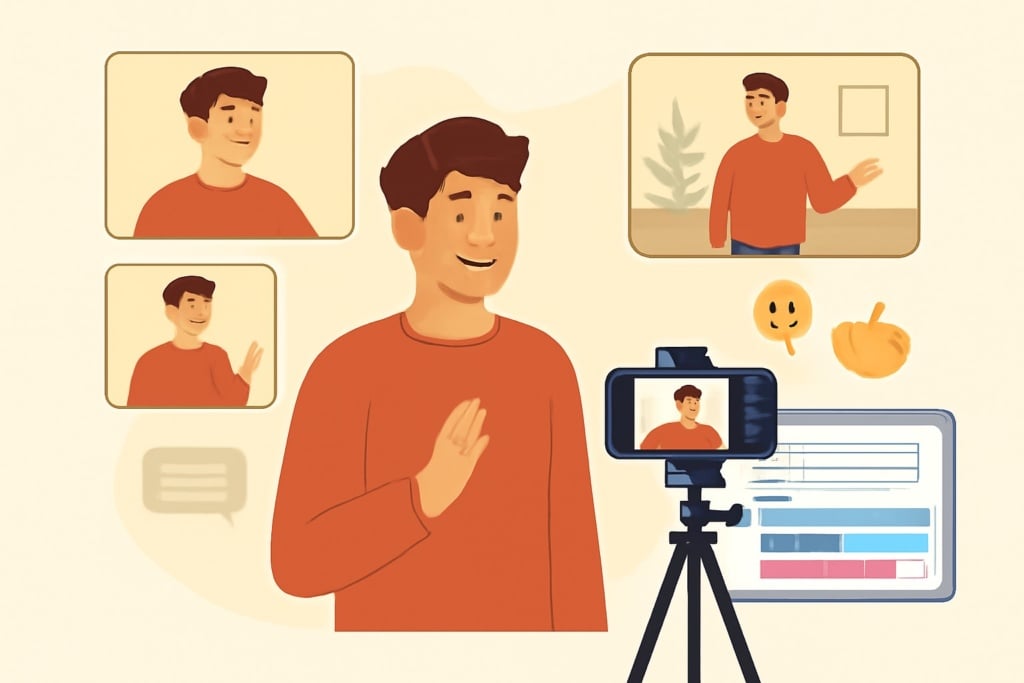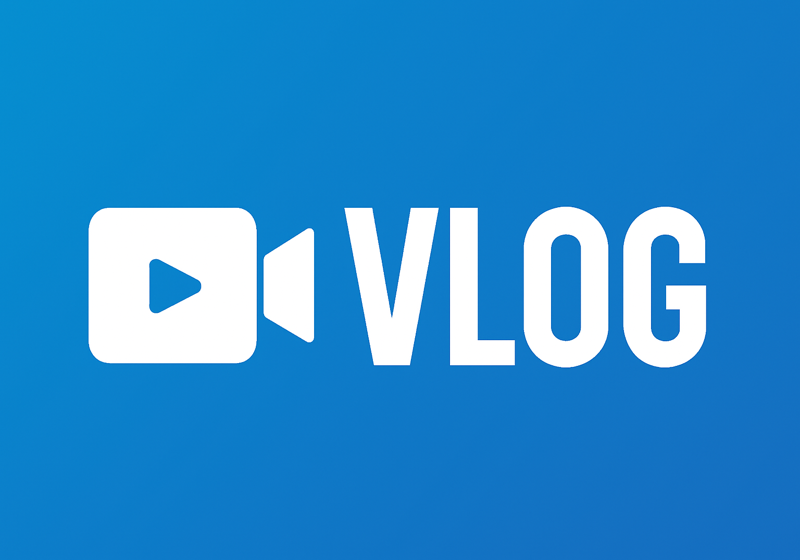Table of Contents
What is a Vlog?
A vlog (short for “video blog” or “video log”) is a digital diary told through videos instead of written text. It’s an online communication format where the creator (vlogger) shares experiences, opinions, passions, or moments from their life with an audience. A vlog can be made using a smartphone, a video camera, or any device capable of recording videos.
Why Has It Become So Popular?
The popularity of vlogging comes from its immediacy and its ability to emotionally connect with viewers. Unlike text, video conveys tone, emotions, and body language, making the communication more personal and engaging. Platforms like YouTube, TikTok, and Instagram have made vlogging widely accessible and easy to share, turning it into a powerful tool for influencing, educating, entertaining, and building communities.
Example: Imagine a travel enthusiast documenting every step of their European tour, showcasing landscapes, local cuisine, and encounters with people — their vlog becomes a vivid and engaging story far more impactful than a simple written journal.

Vlog vs Blog: Key Differences
Format and Content Consumption
While a traditional blog is made up of written articles and static images, a vlog primarily relies on video content. This changes how audiences consume the information: reading requires more focus and time, whereas watching a video can be quicker and more dynamic.
Audience Engagement
Vlogs tend to create a more direct and personal connection because viewers can see and hear the creator, picking up on emotional cues and body language. This builds trust and familiarity, encouraging comments, shares, and loyal followings.
Example: A food blogger may write detailed recipes, but a vlogger who shows step-by-step how to prepare a dish helps learners much more effectively through visual demonstration.
Top Platforms for Vlogging
YouTube: The Video Giant
YouTube is the most popular platform for vlogging. It offers tools to upload, manage, and monetize videos, along with a massive audience interested in nearly every topic. Features like playlists, community interaction through comments and live streams make YouTube an ideal environment for serious vloggers.
TikTok and Instagram: For Short and Viral Content
These platforms are suited for short videos, typically 15 to 60 seconds, perfect for “snap vlogs” or highlight reels. TikTok’s discovery algorithm is especially powerful for viral content.
Example: A fitness vlogger might post full tutorial videos on YouTube and quick workout clips on TikTok to reach different audiences with varying needs.

Popular Types of Vlogs
Travel Vlogs
They document journeys, experiences in new cities, different cultures, and adventures, usually narrated with a personal touch sharing emotions and discoveries.
Lifestyle Vlogs
They portray the creator’s daily life, from morning routines to fashion, beauty, or wellness tips.
Tutorials and Reviews
They explain how to do something or assess products and services, helping viewers make informed decisions.
Educational and Informative Vlogs
These cover deep topics like history, science, or art, with a more didactic style but always in video format.
Example: A tech vlogger might produce smartphone reviews and app tutorials, while a cooking enthusiast shares recipes and practical tips.

Essential Equipment to Get Started
Smartphone vs Video Camera
Today’s smartphones have high-quality cameras that are more than enough to start vlogging without big investments. For those aiming for higher quality, DSLR or mirrorless cameras are excellent choices for a professional look.
Microphones and Lighting
Good audio is crucial: external microphones (lapel or directional) greatly improve clarity. Proper lighting, such as LED panels or softboxes, prevents shadows and enhances visual quality.
Recommended Editing Software
For beginners: apps like iMovie (iOS), Clipchamp (Windows), or CapCut (mobile) are user-friendly and free. For professionals: Adobe Premiere Pro or Final Cut Pro offer advanced features.
Example: A vlogger might record with their smartphone using natural light and edit the footage with CapCut before uploading to YouTube.
Recording and Editing Techniques
Effective Angles and Framing
Varying shots (close-ups, medium shots, wide shots) makes the video more dynamic. Applying the rule of thirds helps balance subjects and objects within the frame.
Basic Editing: Cuts, Transitions, and Music
Trimming unnecessary parts keeps viewers engaged. Simple transitions like fades or cuts work best. Adding royalty-free background music can boost viewer interest.
Use of Effects and Overlays
Texts, emojis, stickers, or speed effects make videos more appealing and easier to follow.
Example: A makeup tutorial could feature close-ups of the eyes, text overlays listing the products used, and soft background music.

Strategies to Grow and Monetize
Consistency and Content Quality
Uploading regularly (e.g., 1–2 videos per week) helps keep the audience engaged and improves rankings on YouTube and other search engines.
Audience Interaction
Replying to comments, asking for feedback, and building community strengthen bonds with viewers.
Collaborations and Sponsorships
Over time, vloggers can partner with other creators or brands for sponsorships, affiliate marketing, or paid content, turning their passion into income.
Example: A cooking vlogger might collaborate with a kitchen appliance brand to create sponsored reviews.
Common Mistakes to Avoid
Lack of Planning
Uploading without a content strategy can confuse the audience and reduce interest.
Poor Audio and Video Quality
Even a well-shot video with distorted audio or blurry visuals can quickly drive viewers away.
Not Knowing Your Audience
Creating content without understanding your viewers can result in low engagement and loss of followers.
Example: A fitness vlogger posting only advanced workouts might lose beginner followers if they don’t offer content suitable for all levels.

Are you ready to start your vlog?
The world of vlogging is accessible to everyone thanks to modern technology and digital platforms. If you have a passion or story to share, starting a vlog is an effective and creative way to connect with the world, build a loyal community, and potentially generate income.
You don’t need professional gear or a big budget to begin — the most important thing is to start, learn, and improve every day.
Are you ready to tell your story? Start your vlog today and make your voice heard!

